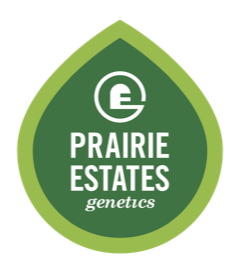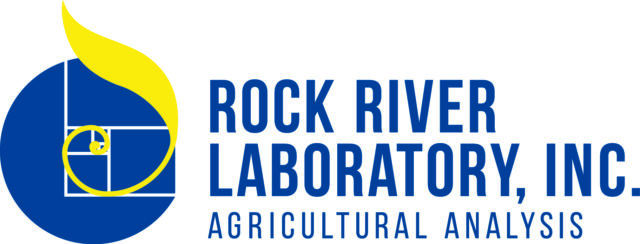Dairy farmers and the U.S. Environmental Protection Agency (EPA) have a new date – Jan. 22, 2018 – before air emission reporting requirements related to manure could go into effect. The U.S. Court of Appeals for the District of Columbia granted EPA’s motion for a stay of an earlier court ruling, pushing the reporting requirement back at least 60 days.
An April 2017 court decision ended an exemption for livestock operations under the Comprehensive Environmental Response, Compensation, and Liability Act (CERCLA). A previous stay delaying the reporting requirement expired on Nov. 14, 2017.
Under the latest ruling, issued Nov. 22, farms still do not have to submit their initial “continuous release” notification – the first step in a multistep process – until the D.C. Circuit Court of Appeals issues its order, or mandate, enforcing the April 2017 opinion. No reporting is necessary until the mandate is issued.
Farms are eligible for “continuous release” reporting because emissions have been determined to be both continuous and stable in quantity and rate. Cornell University’s PRO-DAIRY and the National Milk Producers Federation (NMPF) are working to provide unified guidance in early January 2018.
The latest delay gives producers more time to calculate estimated “hazardous substance” emissions to determine if they meet reporting thresholds. While the EPA reporting requirements cover a long list of potential substances, the two most common for livestock agriculture – ammonia and hydrogen sulfide – are emitted during decomposition of manure. Reportable quantities for ammonia and hydrogen sulfide were set at 100 pounds per day. In most cases, ammonia will be the substance triggering reporting requirements.
There are currently several estimation tools available and, depending on which method is used, results may vary widely. Based on a general estimation tool developed by the University of Nebraska, Cornell’s PRO-DAIRY program has designed a dairy-specific ammonia estimation tool.
PRO-DAIRY’s Karl Czymmek and Curt Gooch estimated it would take 1,428 cows to trigger the 100 pounds of ammonia reporting requirement threshold. However, other methods of estimation could produce considerably lower cow numbers to trigger 100 pounds of ammonia.
Previous calculations estimated it would take several thousand cows to trigger the 100-pound daily emission threshold for hydrogen sulfide emissions.
It’s important to note even much smaller herds may need to report depending on manure storage and handling practices.
While the stay provides another temporary reprieve, dairy organizations and other partners are also working for more permanent solutions. They contend it was never the intent of Congress to require farms to report emission levels under CERCLA, enacted to clean up industrial chemical toxic waste dumps, spills, etc., and the Emergency Planning and Community Right-to-Know Act (EPCRA), which requires parties who store, use or release hazardous chemicals to submit reports to federal, state and local government offices.
In its Nov. 22 stay, the Court of Appeals for the District of Columbia also did not grant the plaintiff, Waterkeeper Alliance, its request to require reporting under EPCRA.
Reporting a three-step process
When and if reporting requirements begin, there’s a three-step process. Michael Best attorneys Leah Ziemba, partner and agribusiness, food and beverage industry group chair, and Taylor Fritsch, associate, outlined those requirements during a webinar hosted by the American Dairy Coalition (ADC).
1) Notify the National Response Center (NRC) – an organization within the U.S. Coast Guard charged with receiving the reports – regarding intent to submit an initial continuous release report. That notification includes the name of the farm, the general location of the farm (city and state), and the hazardous substances to be reported (ammonia and/or hydrogen sulfide). It’s important to note NRC does not require names of specific individuals or addresses, and that information should not be supplied, Fritsch said.
While NRC has a phone number to provide the baseline information, EPA has worked with NRC to create an email option, which will not only avoid lengthy wait times on the telephone, but also ensure the information is used appropriately by NRC.
• If notifying NRC by phone ([800] 424-8802), select “Option 2.” State that you are making an initial continuous release notification and provide the same information as above.
• If notifying NRC by email, include “initial continuous release notification” in the subject line. In the body of the email, provide the name of the farm, the location of the farm by city/town and state, the name of the hazardous substance that will be released (ammonia) and your name and telephone number. For multiple farms under the same ownership, include information for all farms in one email.
After notification, NRC will then confirm receipt of the report and provide each farm an individual “CR-ERNS” reporting number for future reference.
2) Within 30 days of notifying NRC via phone or email, a written continuous release reporting form must be submitted to the appropriate regional EPA office. EPA is currently revising the written form, and farmers should wait for the new form and avoid using older forms, Fritsch said.
3) About a year later, submit a one-time anniversary follow-up form, (within 30 days of the first anniversary of the written form), which will update, verify and recertify the information for the farm.
Other ongoing reporting requirements include calculating emission estimates annually, again maintaining them for your records. If there are no changes, you do not have to submit a new report to EPA.
Fritsch outlined two likely scenarios whereby new annual reports would be required:
• A statistically significant increase (SSI) notification would be required in the event of an “episodic release” above those levels that would result from normal operations, which might result from a disruption in waste handling.
• Changes to previously submitted information, such as a change in the source of emissions (such as an expansion of herd size) or an administrative change such as in a farm’s ownership. That may also include a change in waste-handling systems or procedures.
Don’t submit worksheets
Regardless of the reporting deadline, Fritsch urged producers who may be near emission thresholds outlined above to complete emission estimates to determine whether they are required to submit a continuous release emission report. The estimation tools should be kept as records, whether the producer is required to report or not, because it will provide a paper trail and document the producer made the effort to meet reporting obligations, Fritsch said. However, do not submit the worksheets with any reports to NRC in the event they become public records accessible to environmental advocacy groups.
2005 exemption
One category of farms remaining exempt from reporting requirements are those that submitted 2005 National Air Emissions Monitoring Study (NAEMS) Consent Agreements, but only if there have been no changes to an operation (no substantial increase in animal numbers or change in manure storage system). Those farms are exempt from reporting until EPA completes its work under NAEMS, which could take a year or more.
Check the EPA website for additional updates. EPA’s guide Reporting Requirements for Continuous Releases of Hazardous Substances includes forms to assist you with developing written reports. The guide provides an overview of the information required for the initial and first anniversary follow-up reports. ![]()

-
Dave Natzke
- Editor
- Progressive Dairyman
- Email Dave Natzke





